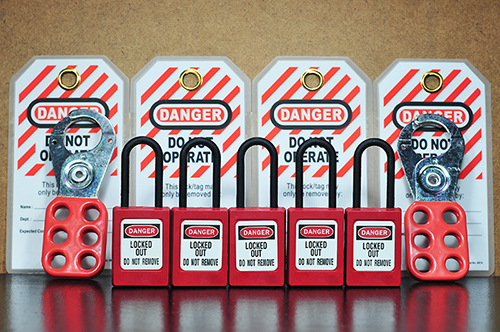As an EHS Consultant, we enjoy assisting companies with implementing lockout/tagout and confined space programs. Our clients understand the importance of a strong safety culture and the safety of their employees. They implement safety programs and training, and seek employee buy-in, to achieve the goal of a strong safety culture. They consider the risks employees may be exposed to and identify ways of mitigating those risks and develop their programs accordingly.
we often perform audits and gap assessments of our clients’ current company programs and often find that we are addressing many of the same issues across multiple employers. Some of these issues are attributed to confusion on the applicability of the standard. Some common misconceptions are:
I Don’t Need a Program Because We Use Contractors to Complete Maintenance Activities and Our Employees Do Not Perform Lockout/Tagout
In many cases, you may choose to eliminate lockout/tagout associated risks to your own employees by having contractors perform the work. While this is a good practice that can be used to reduce risk to your employees, a common misconception is that, by having contractors perform the work, the risk is eliminated and a lockout tagout program and procedures are unnecessary. While it is true that having contractors perform these services reduces the risk to your employees, it does not eliminate the hazards and your company’s liability. Therefore, it is essential to have a lockout/tagout program in place in order to protect employees and contractors who may work on, around, or near the equipment under lockout/tagout.
Employees who use the equipment under lockout/tagout must be trained to an awareness level because these employees are affected employees. The Occupational Safety and Health Administration (OSHA) defines an affected employee as an employee whose job requires him or her to operate or use a machine or equipment on which servicing or maintenance is being performed that is under lockout or tagout, or whose job requires him or her to work in an area in which such servicing or maintenance is being performed. Even though a contractor performs the maintenance on the equipment you may still have affected employees who operate or use the equipment.
OSHA requires affected employees to be trained on the purpose and use of energy control procedures. Additionally, OSHA requires employees who work in an area where lockout/tagout is utilized to be trained in the use of the procedure and about preventing them from attempting to remove a tag and/or lock and trying to re-energize the equipment. As you can see, the training element of a lockout tagout program is necessary.
Additionally, 29 Code of Federal Regulation (CFR) §1910.147(c)(1) requires that employers establish an energy control program consisting of energy control procedures, training and periodic inspections before employees perform servicing or maintenance on machines or equipment where the unexpected startup or release of energy of that equipment could cause injury. Contractor’s may be performing the maintenance; however, the host employees may be covered under the standard when they perform service of that equipment. 29 CFR §1910.147(f)(2)(i) requires that contractors and the host employer inform each other of their respective lockout tagout procedures.
Our Operators Can Clear Jams in Machines by Using the E-Stop Instead of Lockout Tagout
Clearing jams in machines is defined as part of servicing and/or maintenance under OSHA’s lockout/tagout standard. If employees may be exposed to the unexpected energization or startup of the equipment or release of hazardous energy, there is the potential for undesired hazards. The use of an Emergency Stop (E-Stop) is not an effective protection for energy control. This is due to several reasons; the E-stop only stops the equipment from one location and the equipment could be restarted inadvertently by another employee while an employee is clearing the jam. The E-stop is only a control and does not disconnect power to the machine or isolate the energy source. It may be possible to use E-stops in combination with other control measures such as delayed startup, alarms, and interlocked guards if those safety devices provide an alternative effective control for minor servicing, such as clearing a jam.
We Don’t Need to Do Lockout/Tagout Because Our Machines Have Interlocked Guards That Shut Down the Machine During Maintenance
While machine interlocks provide an excellent control measure preventing employees from inadvertent injuries associated with removing or opening guards, they are not an alternative measure for lockout/tagout. Interlocks use control logic to stop the machine, but electrical power is still being supplied. Again, the ultimate goal is to completely de-energize the equipment and isolate any hazards before work is completed on the machine.
While maintaining a strong safety culture remains a priority with our clients, many misconceptions are held about program requirements. While those misconceptions may be common, it’s safety experts, like those at Braun Intertec, that address these misconceptions, assess gaps in compliance, and ensure these programs are implemented correctly – and with comprehensive training – to avoid risk or injury.
Contact Our Environmental Consultants
If you have any questions or want assistance with lockout/tagout programs, please click the link below to fill out our Contact Us form.
